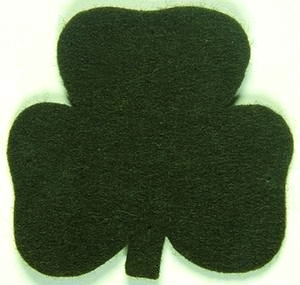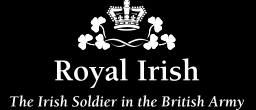38 (Irish) Brigade captures Jebel al Mahdi, Tunisia.
 In April 1943, the First Army selected the 78th Division to begin the final thrust eastwards against Tunis. The Division first had to capture an area of high ground some 20 miles short of Tunis.
In April 1943, the First Army selected the 78th Division to begin the final thrust eastwards against Tunis. The Division first had to capture an area of high ground some 20 miles short of Tunis.
The capture of the high feature, called Jebel al Mahdi, on the left of the Division's front, was tasked to 38 (Irish) Brigade. The pear-shaped feature was some four miles long and two miles across at its widest rising in a fairly gradual slope to 1,400 feet. The sharp end of the feature faced the Irish Brigade and was encircled by a wide, twenty-foot deep steep-sided wadi that was wired and mined. The only approach was through a narrow valley, and it too was mined, booby trapped and within enemy mortar range. There were no vehicle tracks and the ammunition, equipment and supplies had to be carried by mules.
The 6th Battalion The Royal Inniskilling Fusiliers and the 1st Battalion The Royal Irish Fusiliers moved by night to their start positions. The 6th Skins seized the intermediate objectives half way up the feature in the early hours of the morning. The 1st Faughs started their advance at 1300 hours and passed through the Skin's position, moving along the east slope of the Mahdi with D Company right and C Company left. By 1400 hours the leading elements were on their objectives and, consolidating on the reverse slopes of the Jebel al Mahdi, were firm and dug in by 2000 hours.
The 1st Faughs succeeded in capturing or killing 120 enemy at a cost of 50 casualties. The CO of the Skins, Lieutenant Colonel Charles ('Heaver') Allen, was killed during the fighting early in the morning. When A Company, attempting to cross a wadi, was held up by an enemy machine gun, he had moved forward and spotting it in a reverse slope location, attempted to direct a Bren gunner onto the target. The gunner was unable to follow his indication so he called for the Bren gun so that he could mark the target using ‘watch my tracer’ when a Bren gunner calls out and marks an enemy position with strike and tracer. Unfortunately, before he could do so, he was killed when shot through the head.
Later, the Commander 38 (Irish) Brigade, Brigadier Nelson Russell wrote:
'Heaver Allen ... was killed when leading his battalion with the utmost gallantry. This was a great loss. I could write a good deal about Heaver without hoping to do him justice. Put all the qualities of the fighting CO inside a thick set, hardy, clean shaven medium sized man – with a hooked nose and a good determined chin – the result would have been Heaver Allen. I believe his battalion would have followed him anywhere.'





